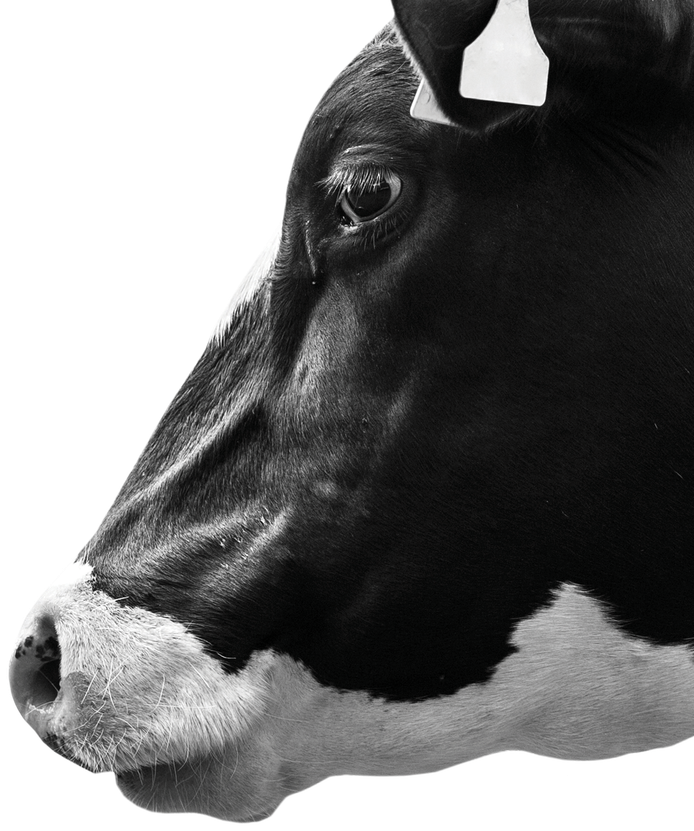NMR RABDF Gold Cup 2023 Finalists Preview - #4 Gladwake Herd

Joe Ives, W&P Ives, Herriard, Basingstoke, Hampshire.
Joe and Claire Ives’ dairy farm business is a finalist in the 2023 NMR RABDF Gold Cup. No newcomer to the top line-up, they were finalists in 2020 and winners of the
Chris May Memorial Cup in 2019, but this time they hope to appeal to the judges with new developments to future-proof the business and improvements to ensure they produce top quality milk in a sustainable way.
This 206-ha tenanted dairy farm dedicates 160-ha to the dairy unit, home to the 250 cow Gladwake pedigree Holstein herd, founded by Joe’s parents, Bill and Peggy. This all year round calving herd is milked through four LELY robots and supported by five full time employees working alongside Joe.
In 2017, Joe and his brother Bob divided up the business to secure the future for their respective families, with Bob focusing on the arable enterprises and Joe on the dairy.
“We work closely, though, whenever and wherever, the farm requires joint input,” says Joe. He and Claire have three teenage sons and cite a strong family ethos as the cornerstone of their success to date.
In the past four years, they have upgraded the dairy farm infrastructure and introduced technology to improve housing, so cows have the right environment for fulfilling their potential.
They have recently completed a far off dry cow building and serving barn for heifers with locking yokes and a robotic cleaner. “This allows for more efficient insemination of maiden heifers,” he adds.
This latest major development completes the current plan, and consolidation is on the cards while interest rates are high and milk prices have dropped back. “It’s important to keep ourselves financially secure and be prepared for opportunities as they arise,” says Joe.
However, investment in the best genetics will continue and Joe has committed to genomic testing of heifers for the past five years, enabling more accurate selection of heifers and cows to breed replacements from.
The aim is to breed efficient, profitable, long life heifers from the best bred cows using sexed semen. About 65 heifers join the herd each year, with another 60 being sold as calved or in-calf heifers. Beef semen is used on the remainder.
“With the help of genomic proofs, pedigree breeding and robotic data we are in a good position to breed highly efficient, healthy and content cows for ourselves and our customers.”
Herd health is monitored carefully, and the Gladwake herd is screened for Johne’s ,BVD, IBR and leptospirosis through the Premium Cattle Health Scheme. Cows are monitored electronically through the robots and any cows that are highlighted are checked manually and appropriate treatments administered. Cows with repeated cases are culled. The herd’s mastitis rate has reduced in the past four years and is currently 9.4 cases per 100 cows.
“We also monitor lameness routinely,” adds Joe. “We get feedback on any problems from the robots, but we also score cows monthly and have an independent scorer in once a year. We foot trim all cows in house so we can be on top of any problems straight away. All cows get a foot trim at 100 days into milk and at drying off.”
Technology also helps them monitor body condition with weights recorded at every milking. The nutritionist and vet will investigate any worrying trends.
“We’re keen to prevent problems,” adds Joe. “We use selective dry cow therapy for 75% of cows, and we’ve reduced our antibiotic usage year-on-year.” Non-critical antibiotic usage in this herd is currently 4.95mg/PCU.
He stresses that his cow data and milk records remain fundamental to the herd’s improvements. “We combine good records, new technology with sound stockmanship to make decisions and improve herd performance. We have a team here who are all dedicated team to achieving this. This is fundamental to our success.
“Our key goal is to produce the best quality product, both milk and cattle, for our customers as efficiently, sustainably and profitably as possible.”
Pointers
- Improved infrastructure to future-proof the business
- Records and data are fundamental to herd management decisions
- New technology is used alongside good stockmanship for monitoring and managing cows
- Investment in top quality genetics is a given
Park Farm – Farm facts
- Herd size: 250 cows, plus 240 young stock
- Yield: 13,700 litres
- 3.91 % fat and 3.19 % protein. Total solids 995 kg/cow
- All-year-round calving herd, robotic milking
- Calving Interval: 385 days
- Conception rate: Cows and milking heifers 42%, maiden heifers 70%
- Herd health: Mastitis rate 9.4%
- Lameness: 96% of herd mobility score 0 or 1
- Herd replacement rate: 25% and sell surplus heifers
